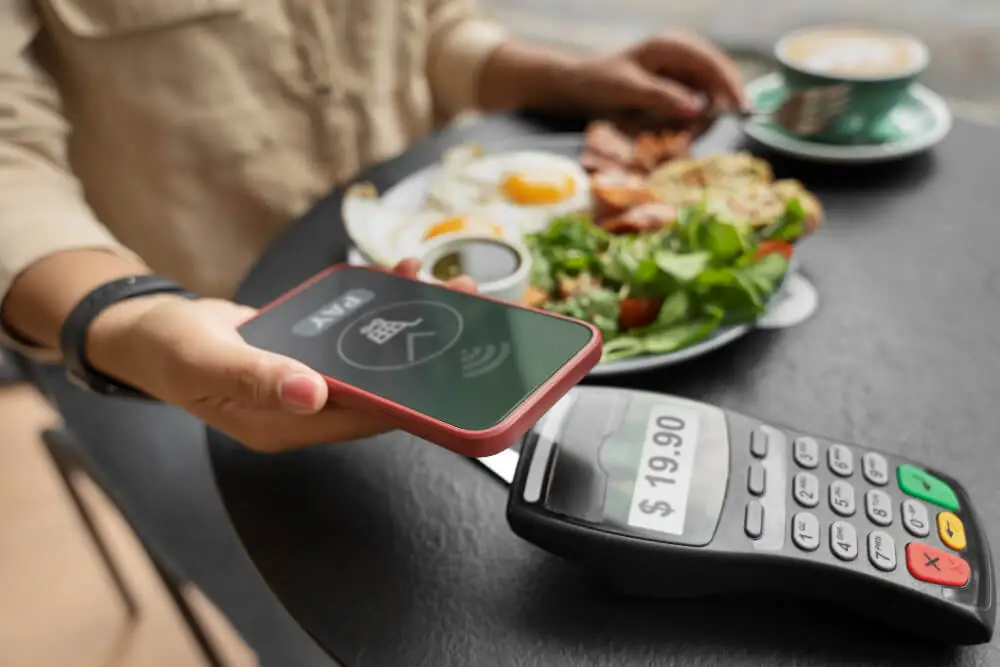Email marketing is a highly effective and versatile digital marketing strategy that involves sending targeted emails to prospects and customers to promote your restaurant, build customer loyalty, and drive revenue. In today’s competitive restaurant industry, email marketing has become a crucial tool for staying connected with customers and encouraging repeat business. With the right email marketing strategies in place, restaurants can nurture relationships with their customers, boost brand awareness, and ultimately, generate more revenue by driving traffic to their restaurants and increasing customer loyalty.
Email Marketing: Connect with your potential customers
Unleash the power of email marketing to connect with your potential customers like never before! With Fleksa’s automated email marketing tool now you can deliver a one-of-a-kind experience that resonates with customers’ tastes and preferences. From tantalizing subject lines that make your taste buds tingle to exclusive content that takes your potential customers behind the scenes of the culinary world, our emails are crafted to captivate and engage.
Fleksa’s automation marketing can help streamline your email marketing process and ensure success. In this article, we will explore ten simple yet effective tips to help restaurants optimize their email marketing efforts in 2023 and beyond.
Best Restaurant Email Marketing Tips in 2023
Tip 1: Build a targeted email list
The success of your restaurant email marketing campaigns depends on the quality of your email list. It’s crucial to build a targeted list of subscribers who are genuinely interested in your restaurant. You can do this by:
- Using website opt-ins: Create prominent opt-in forms on your website to collect email addresses from website visitors who are interested in your restaurant.
- Promoting email sign-ups on social media: Leverage your social media presence to promote email sign-ups. You can run campaigns or giveaways to encourage people to sign up for your emails.
- Encouraging in-store signups: Train your staff to ask for customers’ email addresses in-store and offer incentives or loyalty programs for sign-ups.
Tip 2: Create a catchy subject line
The subject line of your email is the first thing your subscribers see in their inbox. It’s essential to create a catchy subject line that grabs their attention and entices them to open the email. Here are some tips:
- Keep it short and sweet: Avoid long subject lines that get cut off in mobile devices. Keep it concise and to the point.
- Personalize it: Use personalization techniques such as including the recipient’s name or location to make the subject line more relevant and engaging.
- Use emojis: Emojis can add a fun and playful touch to your subject line, making it stand out in a cluttered inbox.
Tip 3: Use a clear call-to-action (CTA)
A clear call-to-action (CTA) is crucial for guiding your subscribers toward taking the desired action. Whether it’s making a reservation, placing an order, or signing up for an event, a clear CTA increases your conversion rates. Here’s how to create an effective CTA:
- Keep it simple and concise: Use clear and straightforward language for your CTA. Avoid jargon or complicated instructions.
- Use action-oriented language: Use action verbs and words that create a sense of urgency, such as “Order now,” “Reserve your table,” or “Book now.”
- Create a sense of urgency: Use phrases like “Limited time offer” or “Exclusive deal” to create a sense of urgency and encourage immediate action.
Tip 4: Segment your email list
Segmentation is a powerful technique that allows you to send relevant and personalized emails to different groups of subscribers. By segmenting your email list, you can improve email relevancy and engagement. Here are some ways to segment your list:
- Demographics: Segment your list based on demographic information such as age, gender, or location to send targeted emails that resonate with each group.
- Purchase history or dining preferences: Use data on past orders or dining preferences to segment your list and send personalized recommendations or offers.
- Email engagement: Segment your list based on open and click-through rates to identify highly engaged subscribers and send them special promotions or rewards.
Tip 5: Personalize your emails
Personalization is a key element of effective restaurant email marketing. By tailoring your emails to individual recipients, you can make them more relevant, engaging, and impactful. Here are some ways to add a personal touch to your emails:
- Use the recipient’s name in the email greeting or subject line. This simple gesture can make your emails feel more personalized and establish a connection with your subscribers.
- Recommend personalized menu items based on their past orders or dining preferences. Show your subscribers that you understand their tastes and preferences by suggesting menu items that are likely to resonate with them.
- Utilize location-based information to promote nearby events or special offers. If you have multiple restaurant locations, you can send targeted emails to subscribers in specific areas, promoting events or offers that are relevant to their location.
Tip 6: Provide valuable content
One of the key aspects of effective restaurant email marketing is providing valuable content to your subscribers. This keeps them engaged and establishes your restaurant as an authority in the industry. You can provide valuable content in various ways:
- Share exclusive recipes or cooking tips that showcase your restaurant’s culinary expertise and entice your subscribers to try them at home.
- Offer insights into the creation of new menu items, such as the inspiration behind them, the ingredients used, and the cooking techniques involved.
- Highlight upcoming events or promotions, such as wine tastings, seasonal specials, or chef’s table experiences, to create a sense of excitement and exclusivity among your subscribers.
Tip 7: Use visual content
Visual content can significantly enhance the effectiveness of your restaurant email marketing campaigns by grabbing attention and enticing your subscribers visually. Here are some ways you can use visual content effectively:
- Use mouth-watering food photos that showcase your dishes in their best light, making your subscribers crave a visit to your restaurant.
- Incorporate videos, such as behind-the-scenes looks of your kitchen, chef interviews, or cooking tutorials, to add a dynamic and engaging element to your emails.
- Use GIFs, which are short animated images, to add a fun and playful touch to your emails and make them more visually appealing.
Tip 8: Test and optimize your emails
Testing and optimizing your emails are crucial for improving the performance of your restaurant email marketing campaigns. By constantly experimenting and refining your emails, you can ensure that they are effective in driving engagement and conversions. Here are some ways to test and optimize your emails:
- Test different subject lines to find the most effective one that resonates with your audience and boosts open rates. You can try different approaches, such as personalization, humor, or urgency, and analyze the results to identify the most successful approach.
- Experiment with different call-to-action (CTA) buttons or links to determine what drives the most engagement. You can test different wordings, colors, or placements of your CTAs and analyze the click-through rates to optimize their performance.
- Analyze email metrics, such as open rates, click-through rates, conversion rates, and unsubscribe rates, to identify areas for improvement and make data-driven decisions for optimizing your email campaigns.
Tip 9: Keep your emails mobile-friendly
With the increasing use of smartphones for checking emails, it’s crucial to ensure that your restaurant emails are mobile-friendly. A mobile-friendly email ensures a seamless and enjoyable experience for your subscribers, regardless of the device they use to access their emails. Here’s how you can create mobile-friendly emails:
- Use a responsive design that adapts to different screen sizes and devices, ensuring that your emails are displayed correctly and are easy to read on mobile devices.
- Keep your email copy concise and easy to read, with a clear hierarchy of information and font size that is legible on small screens.
- Use a single-column layout that allows for easy scrolling on mobile devices, avoiding the need for horizontal scrolling, which can be inconvenient on small screens.
Read more: Top 5 Benefits of Using Reservation System for Your Restaurant
Tip 10: Monitor your email metrics
Monitoring your email metrics is crucial for tracking the success of your restaurant email marketing campaigns and making informed decisions for improvement. Key metrics to track include:
- Open rates, which measure the effectiveness of your subject lines in grabbing your subscribers’ attention and enticing them to open your emails. b. Click-through rates, which gauge the engagement of your subscribers with your content and indicate whether your CTAs are effective in driving traffic to your website or landing pages.
- Conversion rates, which measure the overall success of your email campaigns in driving the desired actions, such as making a reservation or placing an order.
- Unsubscribe rates, which indicate the number of subscribers who have opted out of receiving further emails from you, and can provide insights into the relevancy and effectiveness of your content.
- Bounce rates, which measure the number of undeliverable emails, and can indicate issues with your email list quality or email deliverability.
Regularly monitoring these metrics and analyzing the data can help you identify trends, areas for improvement, and opportunities for optimization in your restaurant email marketing campaigns.
Last Lines
In conclusion, email marketing can be a powerful tool for promoting your restaurant and building a loyal customer base. By following these tips, including understanding your audience, segmenting your email list, personalizing your emails, providing valuable content, using visual content, testing and optimizing your emails, keeping them mobile-friendly, and monitoring your email metrics, you can create effective restaurant email marketing campaigns that drive engagement, conversions, and ultimately, revenue for your restaurant. So, get started with your restaurant email marketing strategy and watch your business grow!







